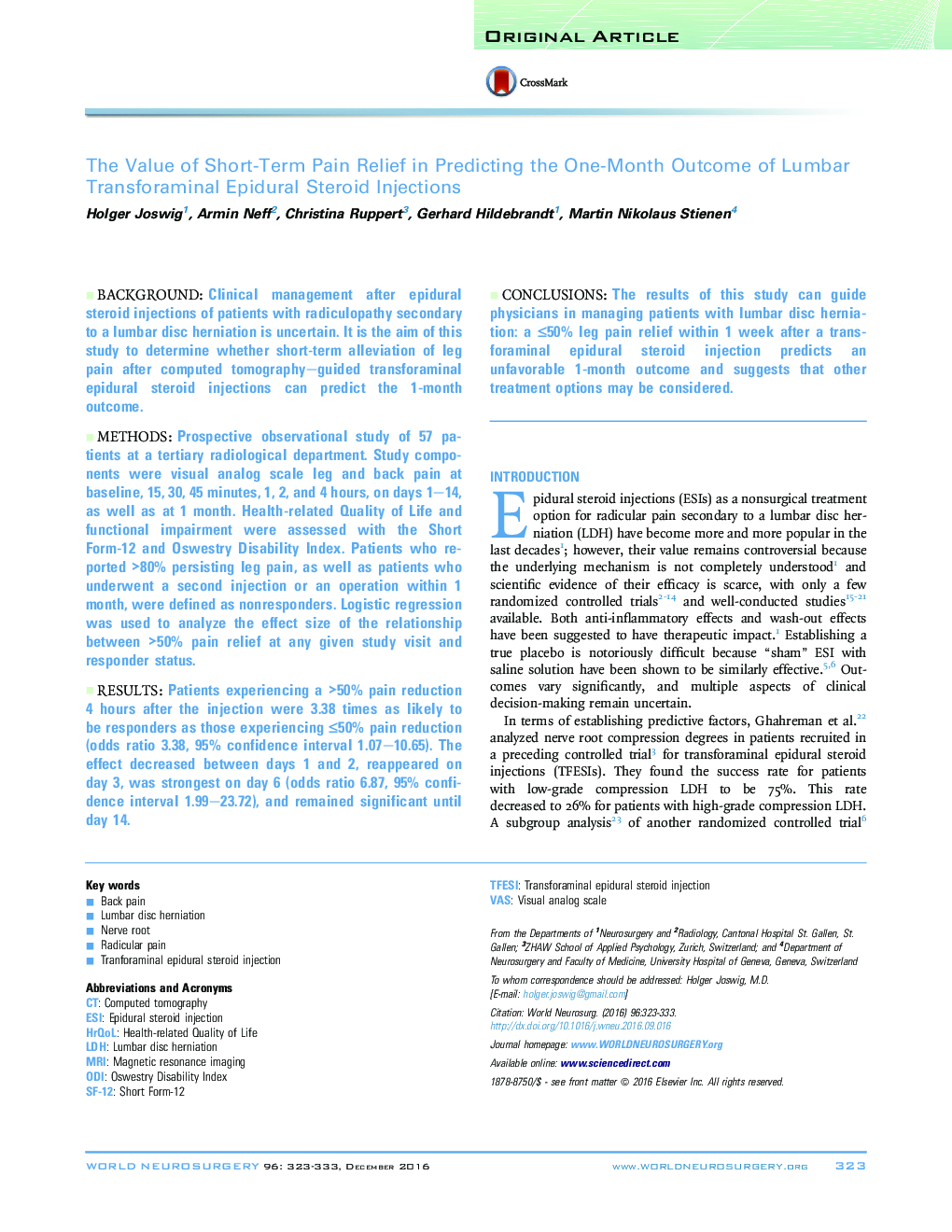| Article ID | Journal | Published Year | Pages | File Type |
|---|---|---|---|---|
| 5635037 | World Neurosurgery | 2016 | 11 Pages |
BackgroundClinical management after epidural steroid injections of patients with radiculopathy secondary to a lumbar disc herniation is uncertain. It is the aim of this study to determine whether short-term alleviation of leg pain after computed tomography-guided transforaminal epidural steroid injections can predict the 1-month outcome.MethodsProspective observational study of 57 patients at a tertiary radiological department. Study components were visual analog scale leg and back pain at baseline, 15, 30, 45 minutes, 1, 2, and 4 hours, on days 1-14, as well as at 1 month. Health-related Quality of Life and functional impairment were assessed with the Short Form-12 and Oswestry Disability Index. Patients who reported >80% persisting leg pain, as well as patients who underwent a second injection or an operation within 1 month, were defined as nonresponders. Logistic regression was used to analyze the effect size of the relationship between >50% pain relief at any given study visit and responder status.ResultsPatients experiencing a >50% pain reduction 4 hours after the injection were 3.38 times as likely to be responders as those experiencing â¤50% pain reduction (odds ratio 3.38, 95% confidence interval 1.07-10.65). The effect decreased between days 1 and 2, reappeared on day 3, was strongest on day 6 (odds ratio 6.87, 95% confidence interval 1.99-23.72), and remained significant until day 14.ConclusionsThe results of this study can guide physicians in managing patients with lumbar disc herniation: a â¤50% leg pain relief within 1 week after a transforaminal epidural steroid injection predicts an unfavorable 1-month outcome and suggests that other treatment options may be considered.
